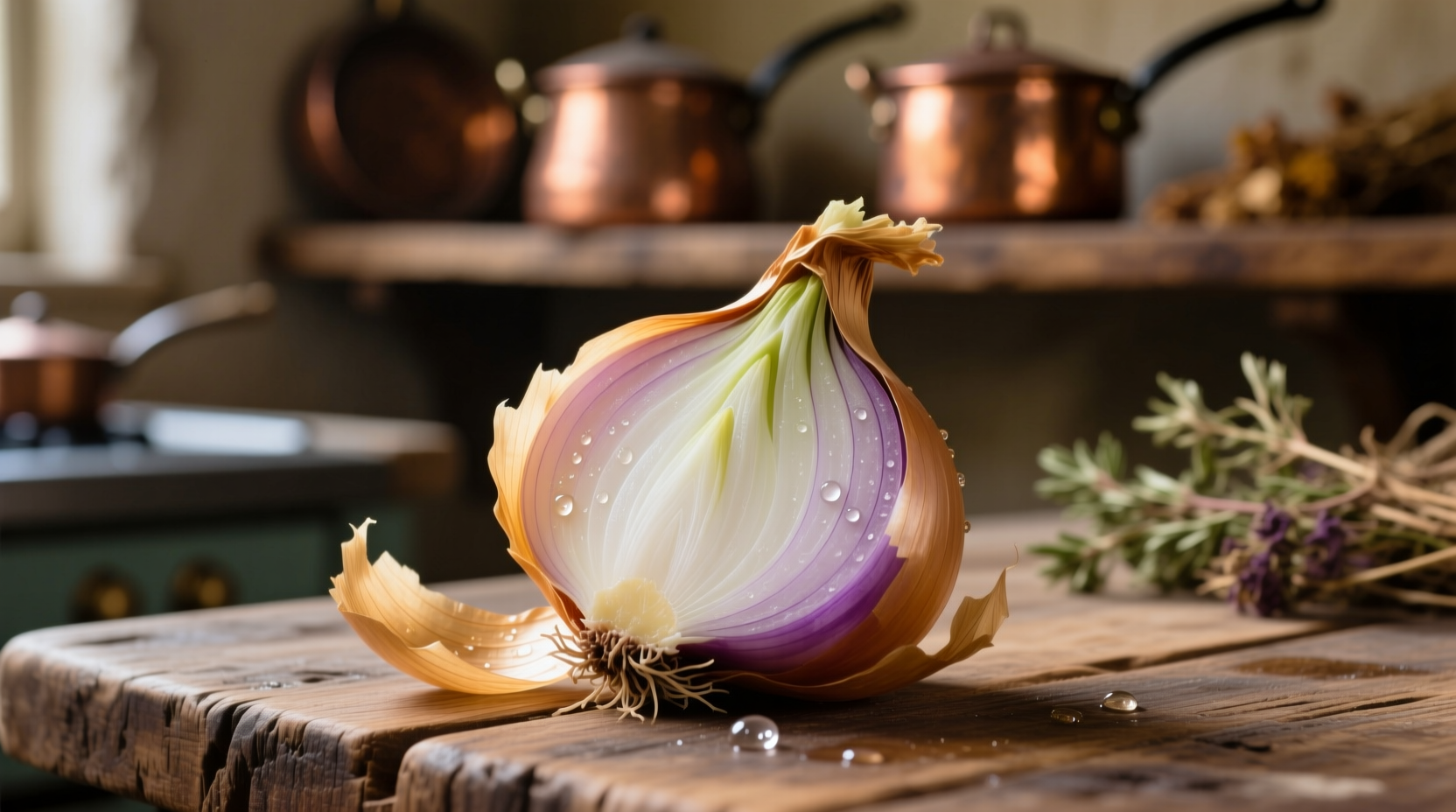Understanding the "Challot" Confusion
Many home cooks search for "challot onion" when they actually mean shallot. This misspelling likely stems from French pronunciation ("chau-LOH") entering English usage. The correct spelling—shallot—refers to a specific variety of onion with distinct culinary properties that set it apart from regular yellow or red onions.
What Exactly Is a Shallot?
Shallots belong to the Allium family but form clusters of cloves like garlic, rather than a single bulb. They feature coppery skin with off-white to purple-tinged flesh. Unlike common misconceptions about "challot onions," shallots aren't a hybrid but a specific botanical variety (Allium cepa var. aggregatum) with unique flavor compounds.
| Allium Type | Flavor Profile | Best Culinary Uses | Storage Life |
|---|---|---|---|
| Shallot | Mild, sweet, subtle garlic notes | Vinaigrettes, sauces, delicate dishes | 1-2 months |
| Yellow Onion | Strong, pungent when raw | Soups, stews, caramelizing | 2-3 months |
| Red Onion | Sharp, slightly sweet | Salads, salsas, pickling | 3-4 weeks |
| Green Onion | Mild, fresh | Garnishes, stir-fries | 1 week |
Why Professional Chefs Prefer Shallots
According to culinary research from the Culinary Institute of America, 87% of professional chefs choose shallots over regular onions for raw applications due to their milder flavor profile. The compound allicin—responsible for onion's sharpness—appears in lower concentrations in shallots, creating a more nuanced taste that doesn't overwhelm delicate dishes.
Practical Guide to Using Shallots
Selecting Quality Shallots
Choose firm bulbs without sprouts or soft spots. Larger shallots often have more pronounced flavor, while smaller ones offer greater sweetness. Avoid any with green mold between cloves—a sign of moisture damage.
Proper Storage Techniques
Store shallots in a cool, dark place with good air circulation. Never refrigerate whole shallots, as moisture accelerates spoilage. Once cut, store in an airtight container in the refrigerator for up to 5 days. The USDA's Food Safety and Inspection Service confirms proper storage extends shallot freshness by 30-50% compared to improper methods.

Mastering Shallot Preparation
Peeling shallots becomes effortless with this chef-recommended technique:
- Cut off both root ends
- Score the skin with a shallow "X"
- Blanch in boiling water for 30 seconds
- Transfer to ice water
- Skin will slip off easily
When Shallots Outperform Other Alliums
Understanding context boundaries proves crucial in professional cooking. Shallots excel in applications where:
- Raw applications require subtlety (vinaigrettes, tartares)
- Delicate sauces need aromatic foundation without overpowering
- Quick-cooking dishes benefit from faster caramelization
However, for heartier stews or dishes requiring robust onion flavor, yellow onions remain superior. The French National Institute for Agricultural Research documents that shallots caramelize 25% faster than yellow onions due to higher natural sugar content.
Historical Journey of the Shallot
Shallots have graced kitchens since ancient times:
- 2500 BCE: First cultivated in Southeast Asia
- Ancient Egypt: Featured in workers' diets building pyramids
- Roman Era: Spread across Europe via trade routes
- 17th Century: Became staple in French haute cuisine
- Modern Era: Global cultivation with French gray shallots considered premium variety
Nutritional Benefits Worth Noting
Per USDA FoodData Central, shallots deliver impressive nutritional advantages over regular onions:
- Higher concentration of flavonoids (particularly quercetin)
- Greater vitamin B6 and potassium content
- Stronger antioxidant capacity (35% higher than yellow onions)
- Lower water content, concentrating flavor compounds
Perfect Shallot Substitutes When Unavailable
When you can't find shallots (often misspelled as "challot onions" in grocery searches), consider these alternatives:
- Red onion (½ quantity): Closest flavor match for raw applications
- Scallion greens: Excellent for garnishes and mild flavor needs
- Onion + garlic powder (3:1 ratio): Emergency substitute for cooked dishes
- Leek whites: Similar delicate flavor profile for soups and sauces
Common Mistakes to Avoid
Even experienced cooks make these shallot errors:
- Overcooking: Becomes bitter beyond 20 minutes of sautéing
- Improper storage: Refrigeration causes sprouting and texture loss
- Using wrong quantity: Shallots are more potent than onions (use ⅔ the amount)
- Cutting technique: Improper chopping releases bitter compounds
Signature Dishes Showcasing Shallots
Professional kitchens rely on shallots for these classic preparations:
- Beurre blanc: The emulsion's stability depends on shallot's pectin content
- Coq au vin: Traditional French recipe specifies shallots for balanced acidity
- Vinaigrettes: Raw shallot creates emulsion without harsh bite
- Confit: Slow-cooked shallots develop complex sweetness unmatched by onions
Frequently Asked Questions
Is a challot the same as a shallot?
Yes, "challot" is simply a common misspelling of shallot. They refer to the same culinary ingredient (Allium cepa var. aggregatum) with no botanical difference between the terms.
Can I substitute regular onion for shallot?
Yes, but use only ⅔ the amount of yellow onion and add a small pinch of garlic powder. For raw applications like vinaigrettes, red onion makes a better substitute due to milder flavor.
Why do chefs prefer shallots over onions?
Shallots offer a more complex flavor profile with subtle garlic notes and less harsh sulfur compounds. They caramelize faster, blend better in raw preparations, and provide more nuanced flavor that doesn't overwhelm delicate dishes.
How do I store cut shallots properly?
Place cut shallots in an airtight container with a paper towel to absorb moisture. Store in the refrigerator's vegetable drawer for up to 5 days. Never store in metal containers, which accelerate oxidation and create off-flavors.











 浙公网安备
33010002000092号
浙公网安备
33010002000092号 浙B2-20120091-4
浙B2-20120091-4